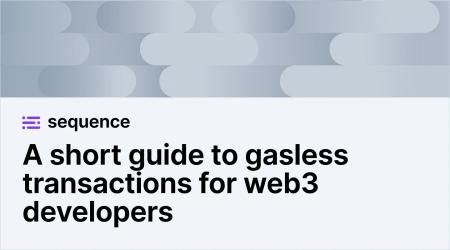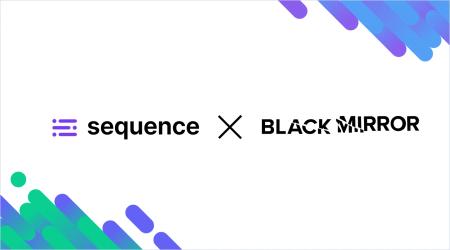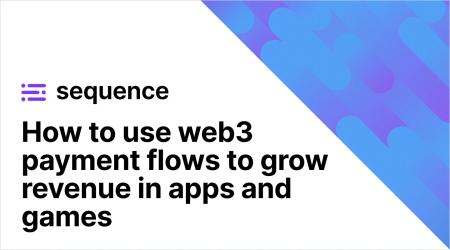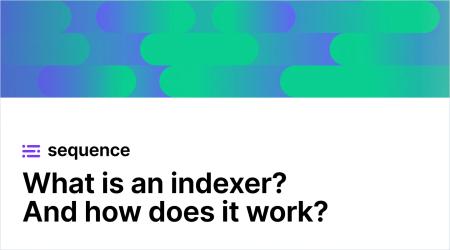Four common mistakes web3 game developers should avoid in 2024
January 10 2024

In 2023, the gaming ecosystem, despite broader turbulence within the NFT market and cryptocurrency markets, underwent changes that kept its average monthly activity above the web3 average and laid the groundwork for future mainstream adoption.
Game-related items and collectibles topped the NFT market by sales volume, and gaming remains accountable for more than one-third of unique active wallets (UAWs) on the blockchain. The launch of innovative web3 infrastructure solutions such as Sequence Builder meant more gaming studios, including AAAs like Ubisoft, and agencies entering the space and evolving their player experiences.
2024 has the potential to represent another monumental year for web3 gaming. However, it’s worth noting that developers still see setbacks by falling into similar traps in the development and go-to-market process. For developers who are leveraging licensed IP, pitfalls can severely impact relationships with licensors and the ability to deliver on revenue expectations.
Here are some of these missteps and how to avoid them in 2024:
Mistake one: Believing web3 can’t be used to build games and experiences players love
While 2023 was a turbulent year for cryptocurrency, game developers shouldn’t underestimate the potential of web3 technology to create captivating gaming experiences. Web3 offers solutions that can enhance player engagement, enable novel gameplay mechanics, and open new revenue streams for game builders that often go untapped.
In 2023, web3 titles such as BoomLand’s Hunters On-Chain showed the gaming world that it’s possible to build a leading game title integrated with blockchain technology - for seamless items trading or renting, for example - that’s also fun and easily accessible for players and performant for developers. The game reported higher Day 30 retention, higher average revenue per user, and bigger spending from whale players compared to the traditional/web2 version of the game.
Solution
With the advances in technology, developers are no longer limited by anything other than their creative desires. For developers working with licensed IPs who have the opportunity to benefit from co-marketing with licensors and tapping into the existing fanbase of millions, having the right wallet and account technology is a requirement to capitalize on an influx of users.
Developers need to integrate with secure tech stacks that abstract away the complexities previously associated with building a game in web3. For example, Sequence wallet solutions are built upon gaming-grade technologies and battle-tested with over 1M+ wallets, integrating seamlessly within existing games’ login and authentication systems, making them invisible to players’ eyes, and enabling an easy and fast onboarding process.
Mistake two: Building with fragmented gaming infrastructure
Another pitfall for web3 game developers is an overreliance on a multitude of infrastructure solutions for game elements integrated with blockchain, like wallets, smart contracts, payments, marketplaces, and player analytics
While the web3 ecosystem offers a plethora of tools and technologies, integrating solutions from too many sources leads to wasted developer time, additional maintenance costs, game-breaking dependencies, additional points of failure, and security issues.
Game development often relies on holistic technology that delivers the majority of needs for game builders, like the full stack game engine solutions from Unity or Unreal. Web3 development should be likewise full stack.
Solution
Developers need to carefully choose and prioritize interoperable and widely adopted web3 standards and end-to-end solutions to ensure seamless experiences for players and faster and more effective building. That is why Sequence recently launched Sequence Builder, an all-in-one, no-code dashboard for web3 game development. All the tools developers need to build games and experiences powered by blockchain—wallets, accounts, payments, smart contracts, networks, data, and marketplaces— in a single, intuitive interface.
For developers making use of licensed content, having greater control of the user journey with a complete stack is vital. Many licensors are understandably concerned about their content being showcased on third-party platforms including marketplaces like OpenSea. Traditionally, building an in-game marketplace was costly and challenging to manage, but there is a way for developers to launch royalty-enforcing branded marketplaces in under a minute through the Sequence Marketplaces, ensuring that gamers and the licensor’s IP remain in an ecosystem they have decision-making power on.
Mistake three: Prioritizing monetization over gameplay
While monetization is essential for sustaining a game's development and growth, a hyper-fixation of financialization and play-to-earn mechanics at the expense of engaging and enjoyable gameplay can alienate players and limit the reach of new games.
You need to think of fans and players first. The web3 gaming space learned this the hard way back in 2022 when earnings-first communities crashed under the pressure of crypto markets, while core play-focused games remained unaffected. Speculative projects, especially those with NFTs that don’t have utility, are more at risk of failing.
Solution
Balancing revenue strategies with player experience is important because players value fun, authentic, and meaningful interactions within games. Developers need to consider their technology carefully to ensure it builds on the positive gameplay experiences that video game players would associate with their favorite web2 games; the kind of game and economy design that will result in reliable, seamless, and delightful player experiences.
For much of the history of web3 gaming, this was near impossible, and an overreliance on “web3 native” users with outdated wallet and payment technology forced developers to adopt overly financialized designs to appeal to the NFT trader community rather than true players.
However, games such as Skyweaver, with its fast-paced battle system and in-game marketplace, and Mighty Action Heroes, with its seamless web3 wallet creation and login, are great examples of titles building on core gameplay mechanics with web3 elements.
Ultimately, you want to make sure that any in-game trading systems or web3 mechanics don’t disrupt your core gameplay mechanics.
One way of doing this is through the Sequence Kit, which enables players to hold, trade, and pay for digital items and collectibles across different gaming experiences through a single interface, regardless of what wallet they use.
Sequence’s Gas Sponsorship and Transaction API means this is possible without needing crypto to buy in-game items, while Sequence Marketplaces allow developers to reward players with skin and item trading while generating perpetual revenue from primary and secondary trading for themselves and their licensors.
For the first time, developers can build with a player-first focus without compromising gameplay for monetization. IP owners who have been cautious about reconsidering web3 because of the traditional friction and low-quality experiences are now increasingly open to web3 titles if they’re built the right way.
Mistake four: Prioritizing short-term stunts over long-term community and ecosystem growth
Developers who focus on rapid user acquisition tactics without fostering a supportive community and ecosystem are often negatively impacted by a transient player base and miss out on key opportunities for sustained success. Developers who have created pre-release mints or launched utility tokens before the game’s debut may find that their teams are distracted by low-ROI stunts, demanding and tiny NFT speculator audiences, or unsustainable community management.
Additionally, developers may grapple with the negative impact of fake player accounts and bots, which can artificially inflate metrics but dilute the genuine engagement and community-building efforts crucial for the success of a game.
Solution
Developers should focus on building vibrant, engaged communities of true players by exploring interoperability and partnerships with other titles, game distribution platforms, and traditional game influencers and avoid a reliance on small and web3-only launchpads or ecosystems. A great example of this is Fortnite’s partnership with Nike .SWOOSH, which allowed Fortnite players to earn digital collectibles by linking their Epic Games and Nike accounts to .Swoosh as part of the Fortnite Airphoria experience.
Incorporating early player feedback, fostering collaboration, and creating a sense of belonging are vital for game development teams to always build with players in mind. A sustainable, long-term approach ensures higher player retention, contributes to the growth and stability of the broader web3 gaming ecosystem, and lets developers tap into complementary projects launched by their IP holders, like loyalty programs, ticketing, and more.
Choosing the right ecosystem to build is critical to leverage these community, liquidity, and interoperability benefits that keep players happy. That’s why the Sequence stack works across all EVM-compatible chains, L2s and app chains, Unreal and Unity game engines, desktop and mobile. This lets developers and players engage with the platforms, communities, and technology that power the biggest games on the planet.
—
In 2024, developers must steer clear of common pitfalls that can hinder their success. The wave of web3 gaming innovation in 2023 has set the stage for a transformative year ahead. By recognizing and rectifying the misconceptions around web3 and its capabilities, developers can open the door to a whole ecosystem of possibilities. With the comprehensive and industry-tested stack offered by Sequence, developers have the means to navigate traditional challenges and collectively shape the future of gaming.
Sequence makes building onchain simple. Developers and teams can launch, grow, and monetize apps with unified wallets, 1-click cross-chain transactions, and real-time data, all in a modular and secure stack. No more stitching together fragmented tools or battling poor user flows. Sequence is production-ready infrastructure that helps teams ship faster, onboard more users, and scale confidently. From chains and stablecoins to DeFi and gaming, Sequence powers developers and applications across the EVM ecosystem with billions in transaction volume and millions of users. Trusted by leaders in blockchain, Sequence powers today’s onchain apps and delivers future-proof infrastructure for tomorrow’s breakthroughs. Learn more at sequence.xyz.
Related Posts

A short guide that explains exactly what gasless transactions are, and why they matter for your web3 experience.

In partnership with KOR Protocol, Sequence and Msquared, Black Mirror's franchise has launched the $MIRROR token and a new web3 experience!

Web3 payment flows allow any app to embed onchain purchases and interactions in a way that feels natural for users. Learn more about them!

As more applications and protocols move onchain, indexers redefine how dev teams access, organize, and use blockchain data. Learn how!